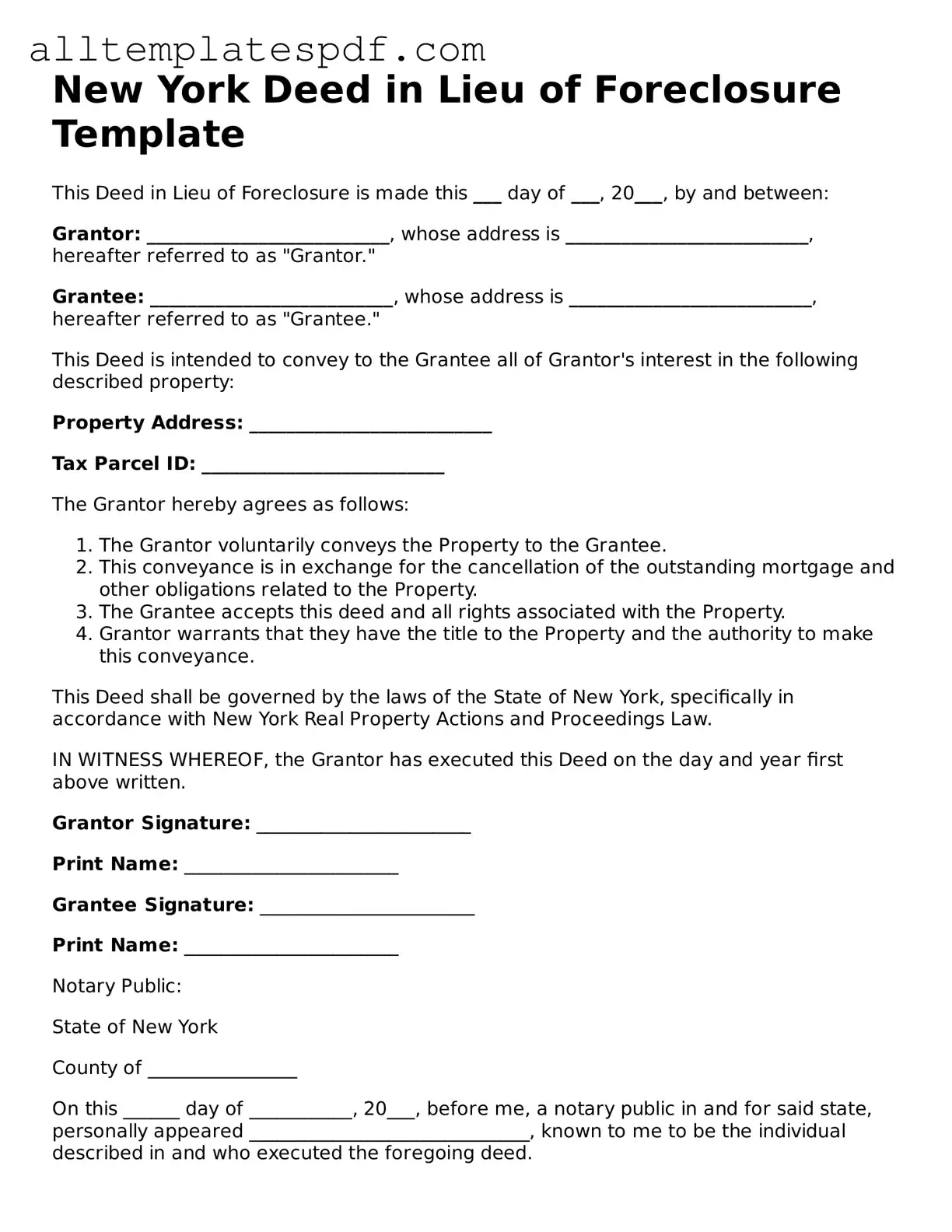Filling out the New York Deed in Lieu of Foreclosure form can be tricky. Many people make common mistakes that can complicate the process. One frequent error is failing to include all required information. This can lead to delays and potential rejection of the deed. Always double-check that you have filled in every section accurately.
Another mistake is not obtaining the necessary signatures. Both the borrower and the lender must sign the document. If either party neglects to do this, the deed may not be valid. Ensure that all parties are present and ready to sign before submitting the form.
Omitting the legal description of the property is another common error. This description is crucial for identifying the property in question. Without it, the deed may not be recognized. Take the time to accurately describe the property to avoid this pitfall.
Some individuals forget to include the date of the transaction. This is a simple yet critical detail. The date helps establish the timeline of the deed and can affect future legal proceedings. Always remember to write the date clearly on the form.
Another mistake involves not providing a clear statement of intent. The form should indicate that the borrower is voluntarily transferring the property to the lender. Without this clear statement, the lender may not understand the borrower’s intentions, leading to confusion.
Many people also fail to check for outstanding liens or claims on the property. If there are existing liens, they can complicate the deed transfer. It’s essential to resolve any outstanding issues before proceeding with the deed in lieu of foreclosure.
Some individuals neglect to consult with a legal professional. This can be a costly mistake. A legal advisor can help ensure that the form is filled out correctly and that all implications are understood. Don’t hesitate to seek guidance if you’re unsure.
Not understanding the tax implications is another area where mistakes can happen. Transferring property can have tax consequences that you might not be aware of. It’s wise to consult with a tax professional to understand how the deed in lieu of foreclosure may affect your tax situation.
In addition, failing to keep copies of the completed form is a common oversight. Always retain a copy for your records. This will be important for future reference and can help protect your interests.
Lastly, many people rush through the process without reviewing the document thoroughly. Take your time to read everything before submitting. A careful review can help catch errors and ensure that everything is in order.
